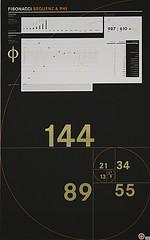 Everyone in the lab knows what they are used laboratory balances: they allow us to determine the weight of even the lightest items! But what good is this data? If you think we can say, that is a basic and very important question to be answered when choosing the appropriate weights for the task. After all, today's market offers a range of scales of models in different price levels, and each model is designed for a particular purpose. As an example, simple scales in the bathroom is much more reliable than a quick glance in the mirror! Modern Electronic Scales Electronic Scales undergone many changes since the lever scales (however, this principle has to date not a small role in weighing in the laboratory). Modern electronic scales are (or can be) a complex machine whose expanded functional software for processing data in some way derived by weighing. The first electronic scales were shown to the public in the late 60s of last century. Then scales to weigh the possibility of samples up to 10 thousand discrete (in other words, the scales with a maximum load of 1 kg could be read to the nearest 0.1 g) was considered a great achievement, while today's digital scales, equipped with sophisticated electronics allow you to read the weight up to several millions of discrete (ie a few thousandths of a gram). Many of the problems that may arise in modern laboratories can be solved by weight, based on the two most common principle of weighing: strain gauge principle or the principle of an electromagnet. Sure, there are several other principles, and each has its pros and cons. For example, there is a principle of constant frequency oscillator, which involves consideration of the difference frequency, coming from such a generator, or the principle of piezoresistive cell, which is based on the resistance deforming under load weight of the sample membrane, which changes its resistance index relaying this information to the ADC scales, which calculates the desired data.
Everyone in the lab knows what they are used laboratory balances: they allow us to determine the weight of even the lightest items! But what good is this data? If you think we can say, that is a basic and very important question to be answered when choosing the appropriate weights for the task. After all, today's market offers a range of scales of models in different price levels, and each model is designed for a particular purpose. As an example, simple scales in the bathroom is much more reliable than a quick glance in the mirror! Modern Electronic Scales Electronic Scales undergone many changes since the lever scales (however, this principle has to date not a small role in weighing in the laboratory). Modern electronic scales are (or can be) a complex machine whose expanded functional software for processing data in some way derived by weighing. The first electronic scales were shown to the public in the late 60s of last century. Then scales to weigh the possibility of samples up to 10 thousand discrete (in other words, the scales with a maximum load of 1 kg could be read to the nearest 0.1 g) was considered a great achievement, while today's digital scales, equipped with sophisticated electronics allow you to read the weight up to several millions of discrete (ie a few thousandths of a gram). Many of the problems that may arise in modern laboratories can be solved by weight, based on the two most common principle of weighing: strain gauge principle or the principle of an electromagnet. Sure, there are several other principles, and each has its pros and cons. For example, there is a principle of constant frequency oscillator, which involves consideration of the difference frequency, coming from such a generator, or the principle of piezoresistive cell, which is based on the resistance deforming under load weight of the sample membrane, which changes its resistance index relaying this information to the ADC scales, which calculates the desired data.
Categories